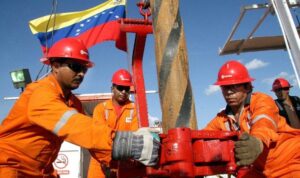
Alfredo Stroessner’s regime lasted 35 years; the general went into exile in Brazil after leaving power
On May 4, 1954, General Alfredo Stroessner came to power in Paraguay through a coup d’état and assumed dictatorial command in the country. The regime only came to an end 35 years later, in 1989. It was one of the longest military regimes in South America.
Upon assuming the presidency, Stroessner deposed Frederico Chávez, then Paraguayan president. Both were from the same party, Colorado, which remained in power until 2008 and returned in 2013. The military’s government, like other South American dictatorships, was marked by political repression, abuse of authority and persecution of opponents.
According to data from the Paraguayan Truth and Justice Commission, more than 19,000 people were arrested, 18,000 tortured, and at least another 20,800 forced into exile. Furthermore, more than 450 people disappeared or were executed during the 35 years of Stroessner’s dictatorship.
While the dictator ruled the country, the Colorado Party monopolized political power in Paraguay. Although there were elections throughout the military regime, the elections were often manipulated so that opponents did not obtain votes. Furthermore, the vote was not secret, which allowed government agents to inspect voting ballots and coerce voters.
In this way, the president managed to establish full control of the country’s political institutions, which also triggered a period of corruption and nepotism in the Paraguayan government. The Stroessner regime also had a considerable focus on the country’s economic development, especially in the areas of agriculture and infrastructure, in addition to encouraging foreign investment.
One of the main constructions during the period was the Itaipu plant, in partnership with the Brazilian government, at the time also under a military dictatorship governed by Emílio Médici. The treaty, signed in 1973, established the terms and conditions for the construction and operation of the binational hydroelectric plant between the countries. It was seen as an example of regional cooperation and integration in South America.
Another important bilateral construction carried out during the Paraguayan dictatorship was the International Friendship Bridge, which connects Foz do Iguaçu to Ciudad del Este, passing over the Paraná River. Signed in 1956 during the presidency of Juscelino Kubitschek, the bridge held the world record as the reinforced concrete bridge with the longest span, 290 meters long. The construction was inaugurated in 1965, during the military government of Castelo Branco.
Alfredo Stroessner’s regime ended on February 3, 1989. After being deposed by another military coup led by General Andrés Rodríguez, responsible for the democratic transition in the country. Stroessner then went into exile in Brazil.
He was received by then Brazilian president José Sarney and received political asylum from the Brazilian government. Stroessner remained in exile in Brasília until his death. The former dictator died in August 2006, aged 93.
TERROR FILES & OPERATION CONDOR
In the 1970s and 1980s, there was a great effort to expand the fight against opponents and subversives in South America. This articulation was called Operation Condor and included the participation of Argentina, Brazil, Chile, Paraguay, Bolivia, Uruguay, also being supported by the United States. The operation involved intelligence operations and the assassination of political opponents exiled in other countries.
“Operation Condor, formalized in a secret meeting held in Santiago de Chile at the end of October 1975, is the name given to the alliance between the dictatorships installed in the Southern Cone countries in the 1970s — Argentina, Bolivia, Brazil, Chile , Paraguay and Uruguay— to carry out coordinated activities, clandestinely and outside the law, with the aim of surveilling, kidnapping, torturing, murdering and disappearing political activists who opposed, armed or not, the military regimes in the region ”described Brazil’s National Truth Commission, a temporary body linked to the government that ended its activities in 2014.
The “Terror Archives”, as the documents recovered in 1992 about the Paraguayan military dictatorship became known, became one of the most important pieces of evidence about Operation Condor. The documents that bring together records of intelligence, torture, arrest and murder operations carried out by the security services of the Stroessner regime served as evidence in several trials regarding the repressions of the time.
The files contained detailed information on thousands of people who were targeted by the regime, including political activists, dissidents, trade unionists, students and others considered a threat to the government. Records are available for online public consultation and at the Justice Museum, in Asunción.
Source: https://www.poder360.com.br/historia/ha-70-anos-ditadura-militar-era-instaurada-no-paraguai/

